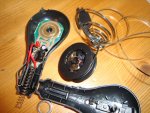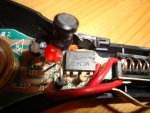Hmm, hard to explain but "referenced to ground" has absolutley nothing to do with anything noise related.
The point is, what is ground?
As soon as you take a lead from "ground" to somewhere else, the far end of that lead is no longer ground. Where in your car is ground? Some vague point on the chassis? Think again! Even the bonding strap between the battery 0v terminal and the chassis can develop a volt or two during cranking.
If you are just driving relays, then things should be fairly safe.
Keep the leads to the relay coils short. These are the leads which could bring noise back into your circuit. The leads to the rely contacts (including 0v) will also bring noise back but most of that will stop at the relay because the contacts are isolated from the rest of your circuit.
ground is the anode of the battery on the car. The PCB will only see "ground" directly back to the battery. As I said 12v and 0v aka ground will be terminated directly at the battery. The only stray voltage drops would be in the length of the wire connecting the two and any resistance in the connections.
The relays will be pulled to ground via the same ground circuit so that current path goes directly back to the battery with nothing in between. I have taken great pains in my opinion to make sure that any stray impredance due to multiple and/or dirty connections was kept to an absolute minimum. The wiring in the car is brand new and every compnent short of the actual chassis is as well with the latest and greatest design of alternator. Proper grounding is essential regardless of a microprocessor in the system but I make it a habit to have multiple ground straps from the engine to chassis, chassis to battery and battery to chassis. That makes sure no ground loops occur and also makes doubly sure that all electronic components have the best chance of a clean signal back to the battery.
As far as you claiming that the ground strap can "develop" a volt or two is wrong. Things like that occur with dirty or undersized grounds. I bet you that you test this on a bran new vehicle that hasnt had a chance to corrode any terminals and you will see constant battery volatge at every point along the chassis. Granted a worn out car or one in even a moderate state of disrepair may exhibit voltage drops and other fun electrical gremlins, one in tip top shape wont see these problems.
Now, since we are talking about external switches and/or outputs what is best practice for cleaning up wiring coming or leaving the module itself? Id assume a clean ground signal would be all thats necessary but beyond that is there any circuits you could recommend to make damn sure things are clean?
This question could probably help a lot of people that use electric motors in proximity of the PIC and are having noise related issues. I think I may have recommended the best Low drop out regulator you could find for robots or autos but I havent really seen anything regarding i/o noise suppression if it is actually neccessary.
More or less, I want to make damn sure Im using components that protect the pic in anyway necessary to make sure it work as intended. I think I did that with a days worth of searching for a VR and hopefully Ive covered my bases at every other step of the way.
If you can explain anyways to reduce noise beyond the power supply I need to know. Thanks



